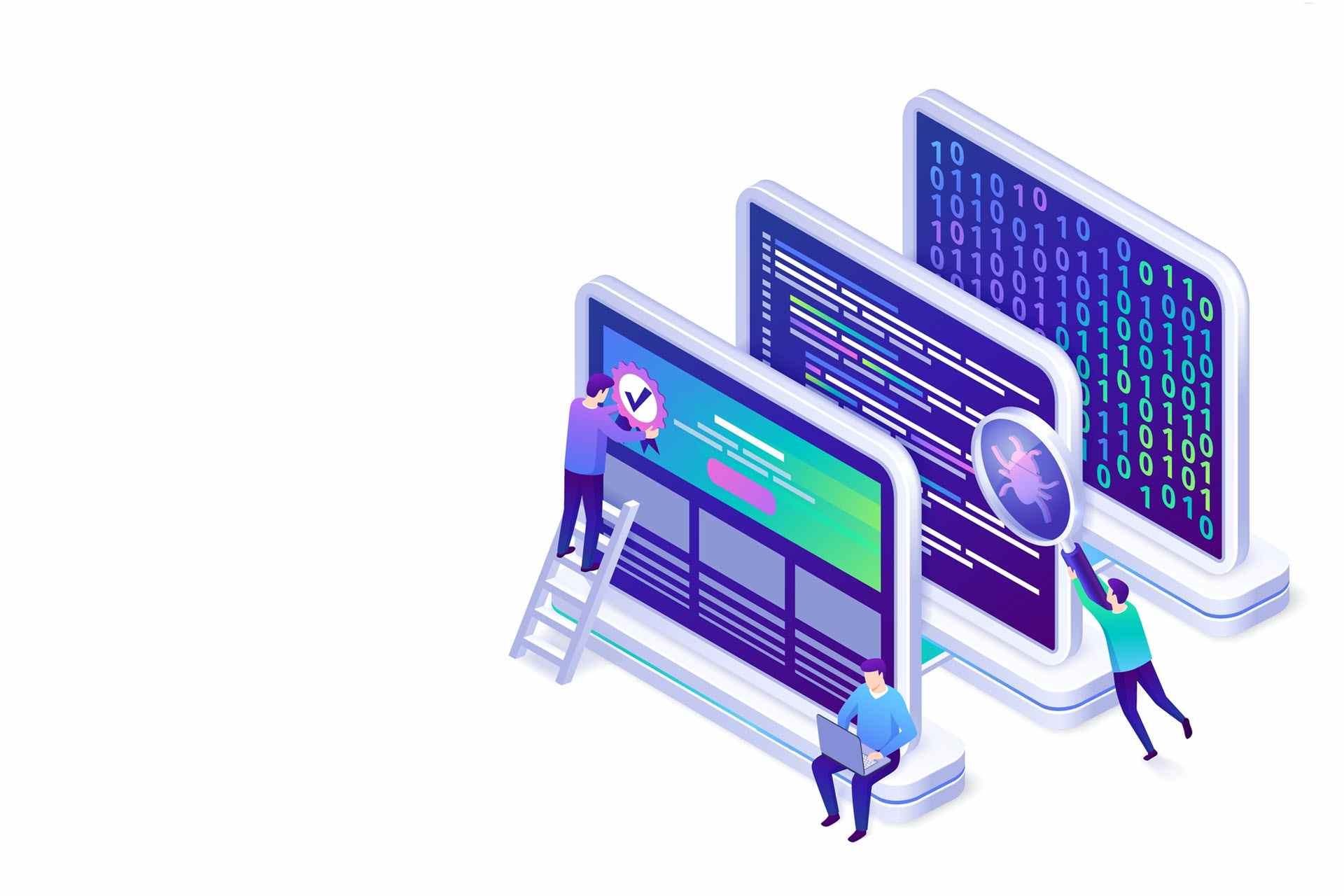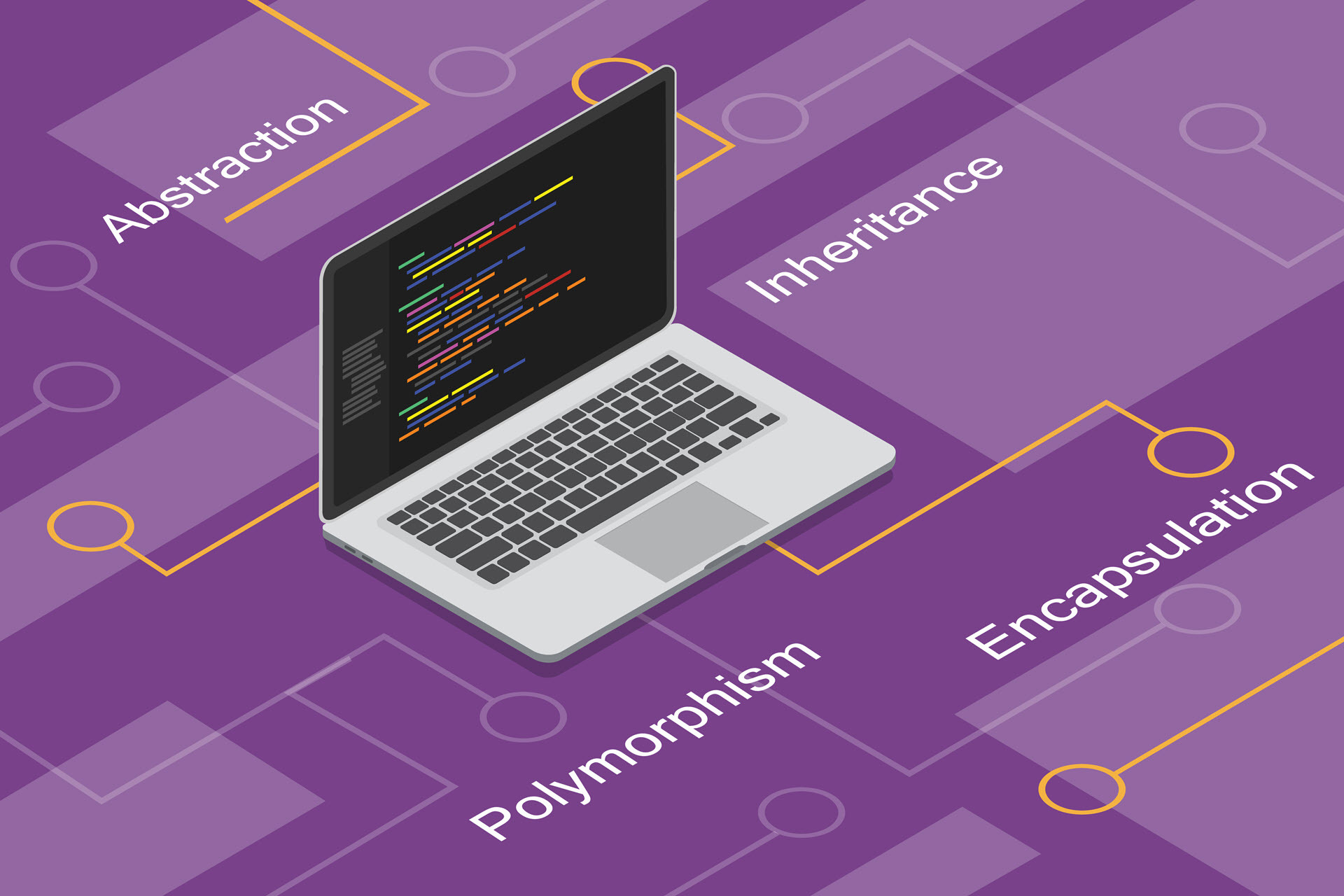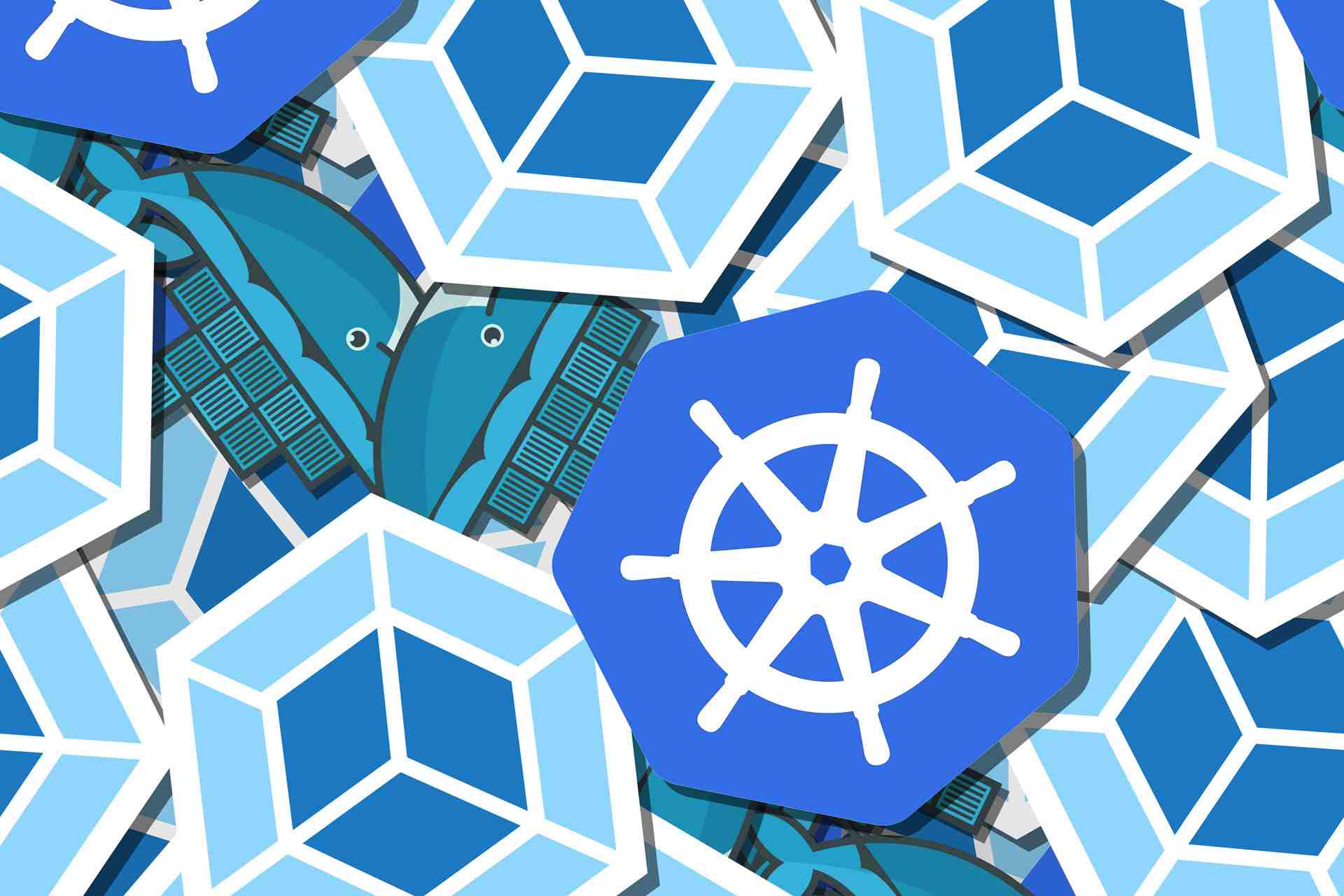Effectively implementing DevOps requires tools that align with your team's skills and objectives. Choosing tools that do not fit leads to inefficiencies like slower deployments and increased rollbacks.
This guide presents the leading DevOps tools, categorized by their primary function. For each category, we list the most prominent tools to assist you in building an optimal DevOps toolset.
What Are DevOps Tools?
DevOps tools are software applications and platforms that automate and integrate the processes between software development (Dev) and IT operations (Ops) teams. DevOps tools improve collaboration, increase efficiency, and enhance software delivery speed and quality.
These tools cover various aspects of the software development lifecycle (SDLC), including coding, building, testing, packaging, releasing, configuring, and monitoring applications.

DevOps Pipeline Tools
DevOps pipeline tools streamline the continuous integration and delivery process. Let's explore some of the top DevOps pipeline tools available.
Jenkins
Jenkins is an automation server that facilitates continuous integration and continuous delivery (CI/CD) for software development. It offers hundreds of plugins to support building, deploying, and automating any project, making it highly customizable and versatile for different DevOps workflows.
Features
- Extensive plugin ecosystem.
- Supports distributed builds with master and slave architecture.
- Highly customizable through scripting and pipeline as code.
Pros
- Considerable community support and extensive documentation.
- Integrates with virtually every DevOps tool.
- Free and open source.
Cons
- Complex setup and steep learning curve for beginners.
- Outdated UI.
Pricing/Plans
- Free.

Read our article on what Jenkins is to discover why it's one of the leading DevOps tools today.
GitLab CI/CD
GitLab CI/CD is part of GitLab, a web-based DevOps lifecycle tool that provides a Git repository manager with wiki, issue-tracking, and CI/CD pipeline capabilities.
Features
- Integrated CI/CD within the GitLab platform.
- Auto DevOps for automatic deployment and monitoring.
- Scalable runners for building and testing applications.
Pros
- Seamless integration with GitLab's SCM and issue tracking.
- Easy to configure with .gitlab-ci.yml.
- Supports parallel and sequential job execution.
Cons
- It is resource-intensive for self-hosted instances.
- It has a steep learning curve for optimizing configurations.
Pricing/Plans
- The Community Edition is free.
- GitLab enterprise edition has a free tier for personal projects, with paid monthly plans starting at $29 per user for increased security, project management, and storage features.
CircleCI
CircleCI is a CI/CD platform that automates software development from code building and testing to deployment. It is designed to work with GitHub, GitHub Enterprise, and Bitbucket repositories to streamline the development workflow.
Features
- Supports Docker and macOS build environments.
- Customizable workflows and parallel job execution.
Pros
- Fast setup and configuration.
- Robust caching strategies that reduce build times.
- Extensive documentation and community support.
Cons
- Expensive for larger teams or projects with high usage.
- Challenging to debug failed builds.
Pricing/Plans
- Free plan available with 6,000 build minutes.
- Paid plans start at $15 monthly for more minutes, users, and features.
- The highest tier offers dedicated support and self-hosted options with custom pricing.
Azure DevOps
Azure DevOps provides development tools for software teams to plan work, collaborate on code development, and build and deploy applications. It supports CI/CD pipelines, git repositories, and Agile planning tools.
Features
- Integrated CI/CD pipelines for automated builds and deployments.
- Agile planning tools, including Kanban boards and backlogs.
- Hosted Git repositories for source control.
Pros
- Comprehensive integration with Azure services.
- Supports a wide range of languages and frameworks.
- Extensive collaboration features for teams.
Cons
- Complex to navigate and set up.
- High costs for larger teams or projects with high resource demands.
Pricing/Plans
- Azure DevOps Services offers a free tier with basic features for up to five users, including private Git repos and limited CI/CD.
- Paid tiers provide more features and user access, with costs based on per-user or per-job pricing. Azure DevOps Server requires a paid upfront commitment or monthly subscription through Azure. Pricing depends on the features needed.
- Free trial available.
Agile focuses on short development cycles with manual handoffs, while DevOps utilizes automated pipelines for continuous integration and delivery. Read our comparison article, DevOps vs. Agile, to understand the strengths of each of these methodologies and how they interact.

DevOps Automation Tools
DevOps automation tools help reduce manual overhead, ensure consistency across environments, and enable faster software delivery. Here are some of the most popular DevOps automation tools.
Ansible
Ansible is a powerful IT automation tool that can configure systems, deploy software, and orchestrate more advanced IT tasks such as continuous deployments or zero downtime rolling updates.
Features
Pros
- Simple to set up and use.
- Strong community and Red Hat support.
- Efficient for managing multi-tier deployments.
Cons
- Performance can be an issue in large-scale environments.
- Limited capabilities in Windows environments.
Pricing/Plans
- Ansible is open source and free to use.
- Red Hat offers a paid version called Red Hat Ansible Automation Platform with additional features and enterprise support. Costs range from $5,000 to $14,000 annually.
Terraform
Terraform is an infrastructure-as-code software tool created by HashiCorp. It enables users to define and provision data center infrastructure using a high-level configuration language.
Features
- Infrastructure as code for efficient provisioning.
- Supports multiple cloud providers.
- State management for tracking infrastructure changes.
Pros
- Allows for version-controlled infrastructure similar to code.
- Highly flexible and customizable.
- Strong community support.
Cons
- Complexity increases with infrastructure size.
- Steep learning curve for HashiCorp Configuration Language (HCL).
Pricing/Plans
- Terraform Community Edition is free. It enables manual infrastructure provisioning on the command line.
- Terraform Cloud has a free tier for small teams and paid plans for larger teams and additional features. It offers remote execution, a visual interface, access controls, a private module registry, and CI/CD integration.
- Terraform Enterprise has paid plans only. It provides all the features of Terraform Cloud in a self-hosted environment with additional customization and stricter security and control.

Need help with manual infrastructure setup?
Read our tutorial on how to provision infrastructure with Terraform.
Chef
Chef is a configuration management tool that uses infrastructure as code to automate the provisioning and management of servers across various environments.
Features
- Infrastructure as code for automating server setup.
- Integration with major cloud providers.
- Automated testing for compliance and security.
Pros
- Powerful and flexible, especially for large-scale infrastructure.
- Strong community and enterprise support.
- Integrates well with cloud services.
Cons
- Steep learning curve for inexperienced users.
- Complex and time-consuming configuration.
Pricing/Plans
- The free and open-source version is available for non-commercial use.
- The paid version of Chef has a free trial; for pricing, request a quote.
Puppet
Puppet leverages declarative code to automate configuration management across various infrastructure components. It automates tasks like provisioning new servers, applying security patches, and configuring software on those servers, all within data centers or cloud environments.
Features
- Declarative language for specifying system configuration.
- Automated provisioning, configuration, and management of infrastructure.
- Comprehensive reporting and real-time visibility into infrastructure configurations.
Pros
- Scalable to manage thousands of resources.
- Robust ecosystem and community support.
- Detailed compliance and configuration reporting.
Cons
- Steep learning curve for those new to infrastructure as code.
- Complex setup and maintenance.
Pricing/Plans
- The open-source version is free.
- Puppet Enterprise offers additional features and support compared to the open-source version. Pricing is tiered based on the number of nodes and the level of support, with no publicly disclosed price.
Our in-depth article on Puppet explains which problems it solves and how to use it to automate manual jobs.

DevOps Testing Tools
DevOps testing tools streamline development by automating various testing phases. They enable teams to identify and fix bugs early in the development lifecycle, promoting overall software quality.
Below are some of the go-to DevOps testing tools.
Selenium
Selenium is an open-source automated testing framework for web applications. It provides a playback tool for authoring functional tests without learning a test scripting language.
Features
- Supports multiple browsers and operating systems.
- Integrates with other CI/CD tools.
- Supports multiple programming languages, including Java, C#, and Python.
Pros
- Open source and widely adopted.
- Strong community support.
- Flexible and powerful for web application testing.
Cons
- Complex to set up for advanced test scenarios.
- Requires significant coding knowledge to leverage fully.
Pricing/Plans
- Free.
JUnit
JUnit is a simple open-source framework for writing repeatable tests. It is an instance of the xUnit architecture for unit testing frameworks.
Features
- Rich set of annotations for test cases.
- Supports test suites.
- Integration with development and build tools.
Pros
- Widely used in Java development.
- Supports test-driven development.
- Easy to integrate with IDEs and build tools.
Cons
- Primarily focused on unit testing.
- Steep learning curve for advanced features.
Pricing/Plans
- Free.
TestComplete
TestComplete is an automated testing platform that allows you to create, manage, and run tests for any desktop, web, or mobile application. Developed by SmartBear Software, TestComplete supports various applications and technologies.
Features
- Supports keyword-driven testing, script testing, and data-driven testing.
- Integrates with other tools in the SDLC, like Jira and Jenkins.
- Visual test recording and playback feature.
Pros
- Comprehensive support for desktop, web, and mobile testing.
- Easy to use for non-developers.
- Robust object recognition algorithm.
Cons
- Expensive for small teams or individual developers.
- Steep learning curve for advanced features.
Pricing/Plans
- TestComplete offers tiered pricing plans (Base, Pro, Advanced) with increasing functionalities, ranging from $1792 to $5,899. All plans include free product updates, user community access, technical support, and a knowledge base.
- A free trial is available for Windows only.
Cucumber
Cucumber is a software testing tool that runs automated acceptance tests in a behavior-driven development style. It uses natural language to describe how the software should behave from the user's perspective.
Features
- Supports behavior-driven development.
- Works across multiple platforms, including Ruby, Java, and .NET.
- Integrates with Selenium for web application testing.
Pros
- Promotes collaboration between developers, quality assurance, and non-technical stakeholders.
- It can be used to test web, desktop, and mobile applications.
- Open source and widely adopted.
Cons
- Requires good collaboration and communication within teams.
- Steep learning curve for writing effective Gherkin scenarios.
Pricing/Plans
- Open source and free.
- CucumberStudio is a complimentary tool that integrates with Cucumber for a more streamlined experience. CucumberStudio offers two paid plans with annual billing: Starter Plan ($32/month per user) and Cloud Plan ($37/month per user).
Are you looking to write better code and produce high-quality software?
Test-driven development (TDD) and behavior-driven development (BDD) are popular software development methods that emphasize testing from the start. Our article explores TDD and BDD, explaining each approach's similarities, differences, advantages, and disadvantages.

DevOps Monitoring Tools
DevOps monitoring tools provide insights into application performance and infrastructure health, which is vital for maintaining system reliability and availability.
Here are the most popular DevOps monitoring tools.
Prometheus
Prometheus is an open-source system monitoring and alerting toolkit originally built by SoundCloud. It is now a standalone and independently maintained project.
Features
- A multi-dimensional model with time series data identified by metric name and key/value pairs.
- Flexible query language (PromQL).
- Supports multiple modes of graphing and dashboarding.
Pros
- Highly efficient and scalable.
- Strong community and ecosystem.
- Integrates well with other tools like Grafana for visualization.
Cons
- Storage is not clustered, which can be a limitation for very large-scale systems.
- Steep learning curve for PromQL.
Pricing/Plans
- Free.
Grafana
Grafana is an open-source platform for monitoring and observability. It allows you to query, visualize, alert, and understand your metrics regardless of where they are stored.
Features
- Rich visualization options with dashboards and graphs.
- Supports multiple data sources, including Prometheus and Elasticsearch.
- Alerting and notifications system.
Pros
- Highly customizable and extensible.
- User-friendly interface.
- Extensive library of plugins.
Cons
- Complex advanced dashboard setup.
- Requires external data sources for metrics.
Pricing/Plans
- The basic version is free.
- Grafana Cloud offers a free tier with limited usage across various features such as metrics, logs, and traces. It includes community support only, and no payment is required at any point.
- The Pro Pay As You Go plan starts for free and charges for usage beyond the free tier limits.
- The Advanced Premium Bundle, starting at $299/month, provides double the included usage of the Pro plan, includes Enterprise plugins, and offers 24x7 support, with usage-based pricing for additional consumption.
Prometheus and Grafana allow you to monitor key metrics and visualize data.
Read our tutorial to learn how to install Grafana on your Kubernetes cluster, connect it to Prometheus, and create insightful dashboards for comprehensive monitoring.
Datadog
Datadog is a cloud-based monitoring and analytics platform for large-scale applications. It provides full visibility into servers, databases, applications, and cloud services. Datadog collects data from all these sources and presents it in a user-friendly way with dashboards, alerts, and reports.
Features
- Real-time performance monitoring of applications and infrastructure.
- Log management and analysis.
- Application performance monitoring and synthetic monitoring.
Pros
- Comprehensive monitoring solution covering logs, metrics, and traces.
- Easy to set up and start monitoring quickly.
- Strong community and integration with other tools.
Cons
- Pricing quickly increases with scale.
- Complex alerting system configuration.
Pricing/Plans
- Free tier for small setups (up to 5 hosts) with basic features.
- Paid tiers offer extended data retention, more integrations, security features, and per-host pricing. Custom metrics have a free tier quota and a pay-as-you-go option.
New Relic
New Relic is a full-stack observability platform that offers complete visibility into the performance of your applications and infrastructure. This visibility helps teams to debug and optimize their software applications.
Features
- Application performance monitoring.
- Real-user monitoring and synthetic monitoring of applications.
- DevOps infrastructure monitoring, including servers and cloud services.
Pros
- Deep insights into application performance and user experience.
- Scalable across large and complex environments.
- Integrates with a wide range of frameworks and languages.
Cons
- Expensive for small to medium-sized businesses.
- Complex interface and navigation.
Pricing/Plans
- Free tier available with 100GB data/month and one full user.
- Pro plans charge extra for data over 100GB at $0.30 per GB.
- Prices for additional users depend on the plan (Standard, Pro, Enterprise).
Are you frustrated with New Relic's cost and complexity?
Our article on New Relic alternatives explores the top choices for powerful monitoring at any budget.

DevOps Version Control Tools
Version control tools enable team collaboration, code versioning, and tracking changes over time. These tools are essential for managing codebases and automating builds.
Here are the popular options if you are looking for DevOps version control tools.
Git
Git is a free and open-source distributed version control system designed to handle small to very large projects quickly and efficiently.
Features
- Distributed version control system.
- Supports non-linear development.
- Efficient handling of large projects.
Pros
- Widely used and supported.
- Powerful branching and merging capabilities.
- Fast and efficient performance.
Cons
- Complex interface and steep learning curve for beginners.
- Requires command line knowledge for advanced features.
Pricing/Plans
- Free.

Our article on what Git is unpacks the core concepts of Git, the most popular version control system, and its functionalities for managing code revisions.
SVN (Subversion)
SVN (Subversion) is an open-source version control system known for its simplicity in version tracking and ability to handle files and directories over time.
Features
- Centralized version control.
- Directory versioning.
- Supports atomic commits.
Pros
- Simple to understand and use.
- Well-suited for linear development models.
- Good Windows support.
Cons
- Not as flexible as distributed version control systems like Git.
- Less popular in modern development workflows.
Pricing/Plans
- Free.
Mercurial
Mercurial is a free, distributed source control management tool. It efficiently handles projects of any size and offers an easy and intuitive interface.
Features
- Distributed architecture.
- High performance and scalability.
- Robust handling of both small and extensive projects.
Pros
- Simple to learn and use.
- Fast operations, even with large repositories.
- Well-suited for handling binary files.
Cons
- Less popular than Git, leading to fewer integrations and resources.
- Some advanced features lack the depth found in other VCSs.
Pricing/Plans
- Free.
Bitbucket
Bitbucket is a Git repository management solution designed for professional teams. It offers free private repositories, code reviews, continuous integration, and more.
Features
- Unlimited private repositories for small teams.
- Built-in continuous delivery and integration.
- Jira and Trello integration for project management.
Pros
- Seamless integration with other Atlassian products.
- Free private repositories for small teams.
- Built-in CI/CD with Bitbucket Pipelines.
Cons
- Free tier limited to small teams.
- UI less intuitive compared to competitors.
Pricing/Plans
- There is a free version for small teams with up to 5 users.
- Paid plans start at $3 per user per month for the Standard plan, which increases build minutes to 2500 per month and storage to 5 GB.
- Premium plan offers unlimited build minutes, 10 GB storage, and more advanced security for $6 per monthly user.

Container Orchestration Tools
Container orchestration tools help manage the lifecycles of containers in dynamic environments. They are vital for deploying, scaling, and networking containers in production.
Here are the essential tools for container orchestration.
Kubernetes
Kubernetes is the leading platform for automating deployment, scaling, and operations of containers across clusters of hosts.
Features
- Automated rollouts and rollbacks.
- Service discovery and load balancing.
- Storage orchestration.
Pros
- Strong community and industry support.
- Highly scalable and flexible.
- Supports multi-cloud environments.
Cons
- Complex setup and steep learning curve.
- Significant overhead for small deployments.
Pricing/Plans
- Open source and free.

Find out why Kubernetes is the most popular container deployment and management platform with our in-depth article on what Kubernetes is.
Docker Swarm
Docker Swarm is Docker's native clustering and orchestration tool. It turns a group of Docker hosts into a single, virtual Docker host.
Features
- Native clustering for Docker containers.
- Easy to use with Docker CLI.
- Load balancing and scaling.
Pros
- Fast and straightforward to set up.
- Integrated with the Docker ecosystem.
- Less overhead than Kubernetes for small to medium deployments.
Cons
- Less feature-rich compared to Kubernetes.
- Limited scalability and management features for very large clusters.
Pricing/Plans
- Free.
Read our comparison article to discover the similarities and differences between Kubernetes and Docker.
Apache Mesos
Apache Mesos is a cluster manager that provides efficient resource isolation and sharing across distributed applications or frameworks. It simplifies the complexity of running applications on a shared pool of servers.
Features
- Efficient resource isolation and sharing across distributed applications.
- Scalable to thousands of nodes.
- Supports Docker containers and traditional execution frameworks.
Pros
- High scalability and efficient resource management.
- It can run multiple types of workloads on the same hardware.
- Active community and ecosystem.
Cons
- Complex setup and steep learning curve.
- It may be overkill for small clusters or simple applications.
Pricing/Plans
- Free.
Kubernetes or Mesos? Read our article to find the best fit for your containerized workloads.
OpenShift
OpenShift is a Kubernetes-based container platform that enables developers to develop, deploy, and manage containerized applications.
Features
- Built on Kubernetes and Docker.
- Integrated development and operations tools.
- Automated installation, upgrades, and lifecycle management across cloud environments.
Pros
- Comprehensive platform for managing containerized applications.
- Extensive support and security features for enterprise use.
- Integration with a wide range of tools and services.
Cons
- Complex to deploy and manage.
- Higher cost compared to open-source Kubernetes.
Pricing/Plans
- Subscription-based pricing with a 60-day free trial.
- Payment plans depend on the deployment model.
Torn between Kubernetes and OpenShift? Our comparison article will help you choose the right container platform.

Log Management Tools
Log management tools collect, analyze, and manage data from various sources. These tools are essential for troubleshooting, security monitoring, and ensuring compliance.
Here are the log management tools that stand out for their effectiveness.
ELK Stack
The ELK Stack (Elasticsearch, Logstash, Kibana) is a set of tools for searching, analyzing, and visualizing log data.
Features
- Real-time indexing and searching.
- Log and event data intake, enrichment, and transformation.
- Data visualization through Kibana.
Pros
- Highly scalable and efficient.
- Flexible and customizable.
- Large community and ecosystem.
Cons
- Resource-intensive.
- Steep learning curve for setup and management.
Pricing/Plans
- Open source and free.
- Elastic Cloud (Managed Service) prices start at $95 per month for the standard plan and go up to $175 monthly for the enterprise plan.
Get started with ELK stack with the help of our in-depth tutorial.
Splunk
Splunk is a software platform for searching, analyzing, and visualizing machine-generated data from websites, applications, sensors, and devices.
Features
- Comprehensive log collection and indexing.
- Advanced search and reporting capabilities.
- Real-time monitoring and alerting.
Pros
- Powerful data processing capabilities.
- User-friendly interface.
- Extensive integration options.
Cons
- High pricing for large data volumes.
- Steep learning curve.
Pricing/Plans
- Free version available with limited features.
- Sixty-day free trial.
- Splunk offers various pricing tiers based on data usage and features (custom quote).
Deciding between ELK Stack and Splunk? Our article offers a deep dive to help you pick the perfect platform for your needs.
Graylog
Graylog is a log management platform that centralizes and simplifies log management across network devices and applications. It offers powerful search, analysis, and dashboarding capabilities.
Features
- Centralized log management.
- Advanced search and data analysis.
- Customizable dashboards and reporting.
Pros
- Open source and cost-effective.
- Scalable and flexible log processing.
- Intuitive user interface for managing logs.
Cons
- Complex setup and configuration.
- Resource intensive for large-scale deployments.
Pricing/Plans
- Graylog offers a free version with total control.
- Paid subscriptions start at $1250/month for Graylog Operations and $1550/month for Graylog Security, which includes enterprise support and advanced features.
Loggly
Loggly is a cloud-based log management and analytics service that offers real-time aggregation, monitoring, and analysis. It supports a wide range of programming languages and logging frameworks.
Features
- Cloud-based log aggregation and analysis.
- Real-time monitoring and alerts.
- Integrates with popular DevOps tools.
Pros
- Easy to set up and use, with no infrastructure required.
- Scalable solution that grows with your log volume.
- Supports a wide range of logs and formats.
Cons
- Expensive at high log volumes.
- Steep learning curve for advanced features.
Pricing/Plans
- Free trial available.
- Loggly has a free tier with 200MB/day ingest volume and seven days log retention.
- Paid plans start at $79/month, offering 1GB/day volume, 15 days retention, unlimited users, and up to 3 source groups.
- The Enterprise plan (custom quote) provides unlimited volume, user access, source groups, and extended retention options.

Security & Vulnerability Scanning Tools
Security and vulnerability scanning tools are essential for identifying and mitigating security risks in the software development lifecycle.
When it comes to DevOps security, these are some of the leading options to consider.
SonarQube
SonarQube is a platform for continuously inspecting code quality. It performs automatic reviews with static code analysis to detect bugs, code smells, and security vulnerabilities.
Features
- Supports over 20 programming languages.
- Integrates with CI/CD pipelines.
- Provides detailed code quality history and metrics.
Pros
- Helps maintain code quality standards.
- Easy to integrate and use.
- Free for open-source projects.
Cons
- Resource-intensive for large projects.
- Some features require a paid plan.
Pricing/Plans
- The community edition is free.
- Paid plans are priced yearly based on lines of code (LOC) analyzed.
- Plans range from Developer Edition at $160/year (up to 100,000 LOC) to Data Center Edition at $136,000/year (for large enterprises).
Aqua Security
Aqua Security provides security solutions for container-based, serverless, and cloud-native applications. It helps prevent application and infrastructure vulnerabilities throughout the software development lifecycle.
Features
- Comprehensive container security platform.
- Vulnerability scanning and runtime protection.
- CI/CD integration for security testing.
Pros
- Covers a wide range of native cloud technologies.
- Easy to integrate with existing DevOps workflows.
- Strong policy enforcement and compliance features.
Cons
- Complex to fully configure.
- Price prohibitive for small organizations.
Pricing/Plans
- Aqua Security doesn't publicly disclose its pricing.
Nessus
Nessus is a comprehensive vulnerability scanner that identifies vulnerabilities, misconfigurations, and potential network device and application risks.
Features
- Comprehensive vulnerability scanning.
- Configuration and compliance checks.
- Supports cloud, on-premises, and hybrid environments.
Pros
- Wide range of scanning capabilities.
- Regularly updated with the latest vulnerability checks.
- Intuitive interface and detailed reporting.
Cons
- Resource-intensive during scans.
- Costly for larger environments or multiple scanners.
Pricing/Plans
- Nessus Professional is priced at $3,990 for a one-year license, $7,780.50 for a two-year license, and $11,371.50 for a three-year license.
- Nessus Expert pricing ranges from $2,790 for a basic one-year cloud subscription up to $9,151 for a three-year subscription with Advanced Support.
Qualys
Qualys is a cloud security and compliance platform that provides global visibility into where your IT assets are vulnerable and how to protect them. It offers solutions for vulnerability management, compliance, and web application security.
Features
- Continuous monitoring and threat protection.
- Integrated suite of security and compliance solutions.
Pros
- Comprehensive security coverage across IT assets.
- Scalable and easy to integrate.
- Continuous updates and innovations.
Cons
- Cost prohibitive for small organizations.
- Complex setup and configuration.
Pricing/Plans
- Free trial available.
- Qualys pricing is based on a custom quote system that considers your selection of cloud platform apps, the number of network addresses (IPs), web applications, and user licenses.
Traditional security appended onto development is a recipe for disaster.
DevSecOps fixes this by embedding security into every stage of the software lifecycle.

How to Choose the Right DevOps Tool?
The right DevOps tool complements existing workflows and scales for future growth. Below is a guide on the key factors to consider when choosing the best DevOps tools for your organization.
Integration and Compatibility
Choosing the right DevOps tool requires considering its integration and compatibility with your existing environment. Here is what to look for:
- Seamless integration. Assess if the tool integrates smoothly with your development stack, development environment, and management platforms. A well-integrated tool maintains a unified workflow and prevents data siloing.
- Infrastructure compatibility. Evaluate if the tool operates effectively with your existing infrastructure or requires significant changes. Prioritize tools that cause minimal disruption.
Learning Curve and Resources
A tool's adoption success hinges on its learning curve and available support resources. These factors are pivotal to your team's ability to effectively learn and use the tool.
Here are the factors to consider when choosing a new DevOps tool.
- Customization requirements. Consider the level of customization needed. Highly customizable tools offer flexibility but may require more learning effort.
- Support and documentation. Verify that the vendor provides comprehensive documentation and support resources. Strong support and a vibrant community are vital for overcoming challenges.
- Futureproofing. Investigate the tool's roadmap for future updates to ensure it stays relevant and avoids end-of-life situations.
Team Fit and Cost
A tool's compatibility with your team's skills and budget is as important as its technical capabilities.
Here are the elements directly affecting a tool's integration and long-term viability.
- Impact on workload. Estimate the time investment required for setup and maintenance. Consider the tool's impact on current projects and workflows.
- Experience and training. Find out if your team is familiar with the tool or similar platforms. Ample training and team buy-in are essential for a smooth transition.
- Budget considerations: Ensure the tool aligns with your financial constraints. While open-source options may be more cost-effective, they might require a greater initial configuration investment.
Security and Alternatives
It is imperative to prioritize tools that strengthen your overall security posture. Before incorporating a new tool, evaluate its built-in security features, such as access control, encryption, and vulnerability management. Likewise, assess any potential security risks it introduces, such as new attack vectors and data exposure.
The Value of Free Trials
Take advantage of free trials many of the tools listed here offer. Use these trials to assess the tool's functionality, compatibility with your existing infrastructure and workflows, and value proposition in meeting your team's specific needs.
Feeling the pinch of rising IT expenses? Our in-depth guide to IT cost reduction exposes hidden cost-saving opportunities within your infrastructure.
The Importance of Selecting the Right DevOps Tools
A core principle of successful DevOps implementation is selecting a suitable set of tools as they directly affect the efficiency and effectiveness of your software delivery pipeline. Ideally, these tools should integrate seamlessly with your existing infrastructure and development processes. Furthermore, they must also cater to your development and operations teams' skill and experience levels.
By carefully considering these factors, you can ensure that your DevOps toolset empowers collaboration, automates manual tasks, and ultimately streamlines software delivery.



